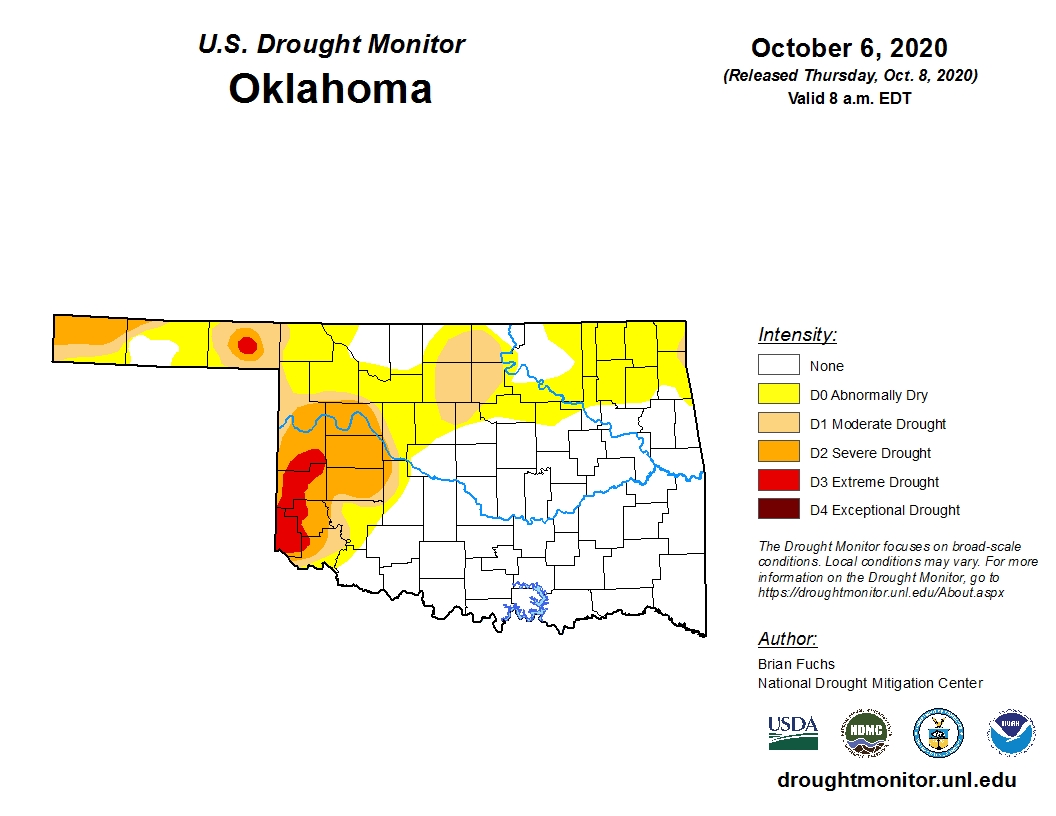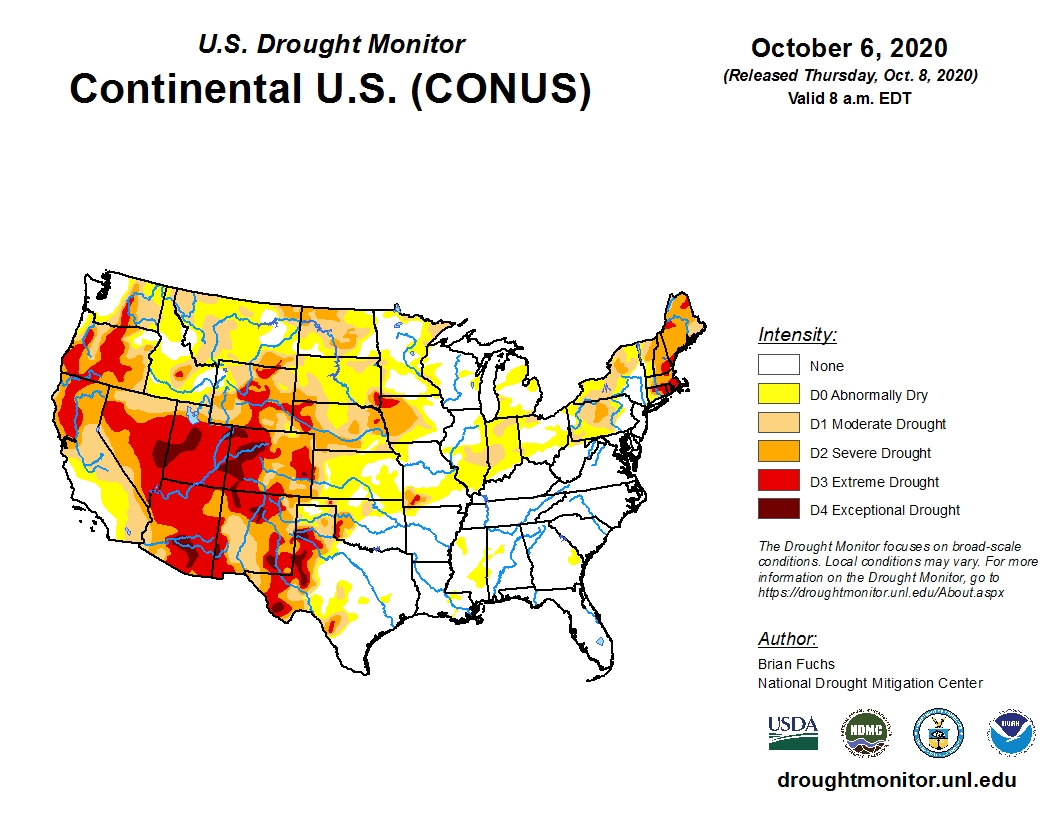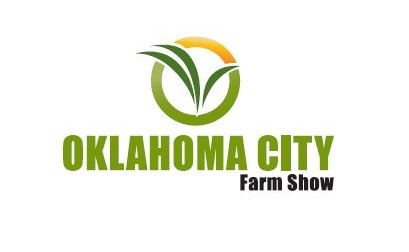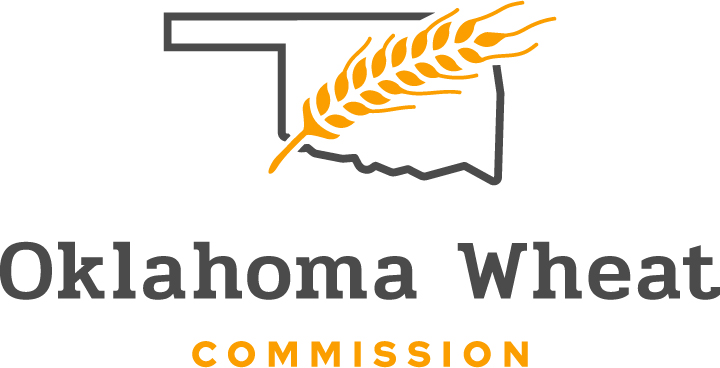
Agricultural News
Latest Drought Monitor Map Shows More Than 62 Percent of The U.S. Now in Drought With Extreme Drought Expanding In Many Areas, Incuding Oklahoma
Thu, 08 Oct 2020 16:55:59 CDT
 Extreme drought (or worse) now covers almost 16 percent of the U.S., about 1.5 points more than last week according to the latest U.S. Drought Monitor map.
Extreme drought (or worse) now covers almost 16 percent of the U.S., about 1.5 points more than last week according to the latest U.S. Drought Monitor map.
Approximately 62.8 percent of the country is now experiencing some type of drought condition.
A new area of moderate drought (D1) was introduced in southwest Wyoming and southeast Idaho.
Eastern Colorado had a large expansion of extreme drought (D3) while western Colorado and eastern Utah had large expansions of exceptional drought (D4).
Extreme drought also expanded over north central Colorado, western and northern New Mexico while a new area of extreme drought was introduced in eastern New Mexico.
To view the current U.S. drought monitor map, click here.
For Oklahoma, abnormally dry conditions and moderate drought were expanded over northern Oklahoma while extreme drought expanded in southwest Oklahoma.
Overall, about 12 percent more of the state is covered in various shades of drought this week compared to last week.
The real concern now is for farmers planting wheat into dry soil. The USDA estimates about half the intended wheat acres have been planted with close to a quarter of it emerged.
Farmers hoping for wheat pasture need rain soon to keep the young wheat alive while farmers planting for grain only are waiting for additional rain before the planting window closes.
To view the current Oklahoma drought monitor map, click here.
Looking ahead, the view becomes even more challenging as forecasters are expecting a strong La Nina weather pattern to bring dryer than normal conditions to Oklahoma from now until next spring.
To view the latest monthly drought outlook map for October, click here.
To view the 6-10-day temperature outlook, click here.
To view the 6-10-day precipitation outlook, click here.
The U.S. Drought Monitor Map is developed through a partnership between the National Drought Mitigation Center at the University of Nebraska-Lincoln, the United States Department of Agriculture, and the National Oceanic and Atmospheric Administration.

WebReadyTM Powered by WireReady® NSI
Top Agricultural News
More Headlines...




